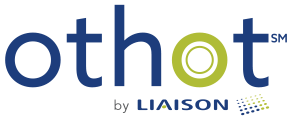Addressing Affordability Amid COVID-19 with Data and Analytics

Zach Varga
Like many organizations and industries, your institution and the entire higher education community are facing significant challenges from the COVID-19 global pandemic. Whether you are trying to enroll your class or you are working to ensure your current student body retains and continues on their successful path, your primary focus is and should be the physical health and well-being of your current and prospective students. But the sad reality is another health component is at risk and jeopardizes your students: the financial health of your students and their families. That directly affects the affordability of starting or continuing their education.
Over the past few weeks, I’ve had the opportunity to listen to many of our partners and the challenges they are facing, and I’ve tried, however possible, to provide support and guidance during this time. The best ideas come out of sharing best practices across our community, and they also come from the direction of data. I wanted to share some of the tactics our partners are taking and how data insights are blended with these approaches to mitigate and improve affordability during these times.
- Institutions want to understand who to focus on or who is at risk for affordability concerns. One of the first things to consider is whether or not financial impacts are a driver for individual students. Using predictive and prescriptive modeling, especially at an individual level, there is a way to tell which data variables and attributes affect a student’s likelihood to enroll or retain. Determining if institutional aid, external aid, or even financial status (expected family contribution) is impactful to a student is key. If there is limited price elasticity or sensitivity, this can be a valuable indicator that economic changes may not be influential in certain students’ affordability. Ultimately, their decision to enroll or retain at your institution should be unwavering.
- While expected family contribution is a normal way to identify a student’s or family’s ability to pay, in these changing times, there is also value in looking deeper at family income or family assets. If these are reported and collected in your data, it can help to better determine how sudden or how gradual the impact to affordability may be. Most students are probably not looking to resubmit their FAFSA during this time, but it doesn’t mean there aren’t changes to financial standing that need to be considered.
- Finally, what if students demonstrate significant price elasticity for financial aid? This can also help identify the students most at risk for changes in affordability. If students already demonstrated a high need prior to the economic changes, odds are you already provided them with the optimal awards they would be eligible for. But what about the students who previously had a low or moderate demonstrated need? By using prescriptive analytics and testing price sensitivity, you can determine what the impact could be if you offered a slightly higher award to mitigate the economic risk. However, you need to ensure you can account for the cost of this increase in awards. More importantly, what if additional awards are not possible, but you need to determine what the impact could be on your enrollment or retention goals if students’ need increases. Data science can demonstrate the impact if you removed some or all aid from students. This would simulate the expected decline in enrollment or retention if the need gap widens.
This is a constantly evolving situation and our strategies and communications need to remain nimble. I wanted to get some of these initial thoughts out to you, but I’m sure there will be more best practices to be shared amongst our community. Our continued focus on the physical health of our community is paramount, and when possible, let’s see how we can best support financial health as well.

Zach Varga




